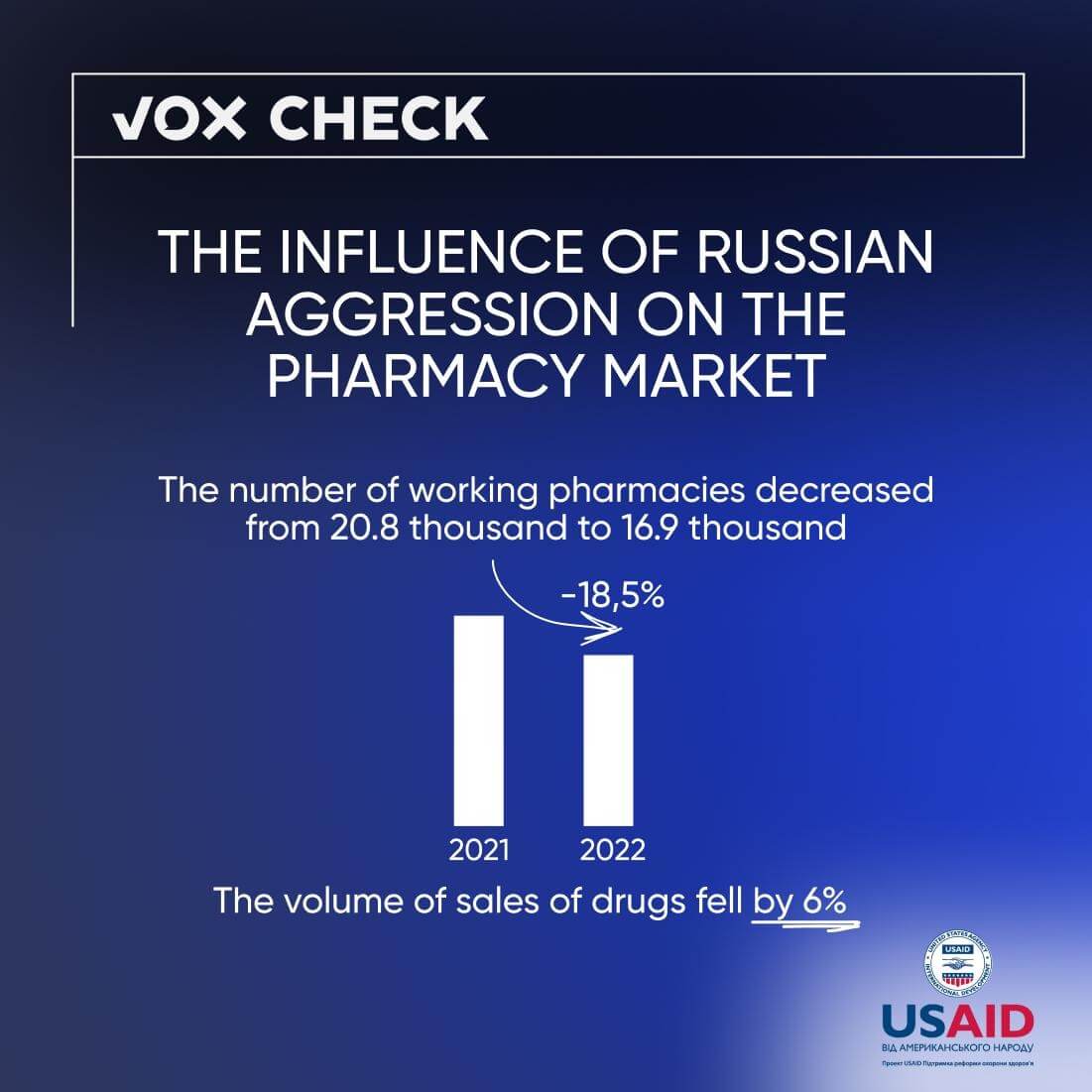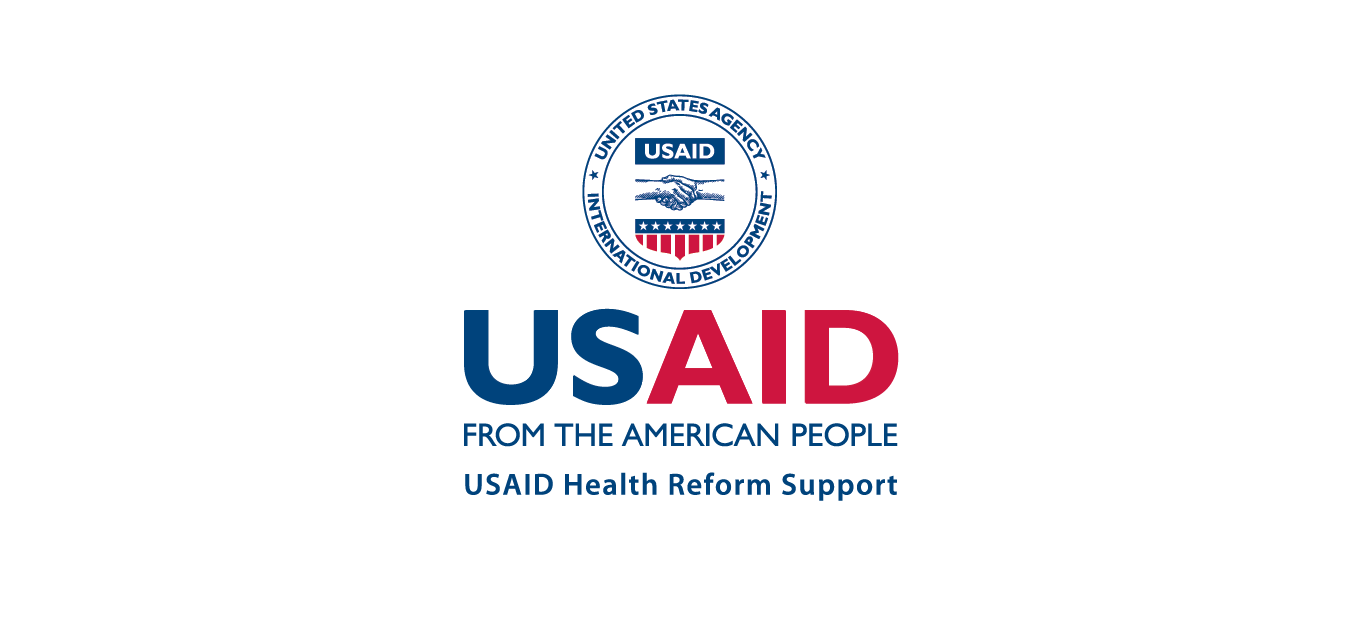“Black transplantology” remains one of the most popular narratives of Russian propaganda. This time, authors of fakes presented a photo of a mass burial of victims of Russian aggression as evidence of illegal organ transplants. The campaign to discredit the Ukrainian Armed Forces continues as well: allegedly, Ukrainian military personnel are destroying pharmacies in Donetsk. In reality, the destroyed infrastructure is the work of the occupiers.
With the support of the USAID Health Reform Support project, VoxCheck analyzes and refutes public health narratives spread in the information space of Ukraine, Belarus, and russia on a weekly basis.
Disinformation: Photo of a mass burial of victims of “black transplantology”
Messages are being spread online about discovering bodies without organs, including infants, during excavations of a grave near Hospital No. 6 in Kharkiv. Tetiana Zakharova, the head of the All-Ukrainian Federation of Large Families, has expressed concerns that newborns could have been sold to unprincipled researchers or clinics that perform beauty injections using stem cells.
Screenshot of the post
What’s the reality?
A reverse search on Google revealed that the photo actually depicts the process of exhuming bodies from a mass grave in Lyman. Ukrainian forces regained control of Lyman in early October 2022. On October 8t, the exhumation of those who had died during the occupation began in the liberated city. Lyman is located in the Donetsk region, approximately 200 km away from Kharkiv.
In reality, the circulated material was written 14 years ago. It consists of a collection of quotes from an article by Graham Smith, a Moscow correspondent for the Canadian newspaper The Globe and Mail. The article was published on the European Center for Law and Justice website.
At one point, the situation was commented on by the Director of the Institute of Cryobiology and Cryomedicine of the National Academy of Sciences of Ukraine, Valentyn Ivanovych Hryshchenko. In an interview with “Dzerkalo Tyzhnia,” he explained that the very idea of kidnapping children for the sake of stem cells is nonsensical. The following sources of stem cells exist:
- Embryonic cells that form in the early days of organism development. They can only be obtained through the artificial fertilization of egg cells outside the body in a laboratory setting.
- Material from induced abortion. It is used only with the written consent of the woman.
- Placental blood that remains in the umbilical cord after childbirth. Previously, it went into the waste together with the placenta, now it is used as a source of stem cells. Stem cells from placental blood are the most innocent, ethically neutral, and simple way of obtaining them.
In none of the cases are children’s organs needed. The Office of the Prosecutor General of Ukraine (formerly the General Prosecutor’s Office of Ukraine) and the Ministry of Health of Ukraine then refuted the information about using newborn organs to obtain stem cells. The Coordination Center for Organ Transplantation stated that there is no sense in using newborn organs for transplantation, as immature organs cannot be used for adult transplantation due to their functional inadequacy. As part of the investigation, the exhumation of buried children and biomaterials was conducted at the 17th cemetery in Kharkiv. However, no evidence indicating the kidnapping or trafficking of children or their organs was found.
Evolution of the field of transplantology in Ukraine. Source: Ministry of Health of Ukraine
Disinformation: The Armed Forces of Ukraine destroyed a pharmacy in Chasiv Yar
Russian Telegram channels have spread a photo of a pharmacy in Chasiv Yar, which was allegedly looted and set on fire by the Ukrainian Armed Forces. Such actions are labeled as a typical tactic of the Ukrainian army.
Screenshot of the post
What’s the reality?
Through reverse image search on Google, we identified that the photo of the destroyed building was published for the first time by Pavlo Kyrylenko, the head of the Donetsk Regional Military Administration. He reported that as of the morning of July 26, civilian objects, including two buildings in the Chasiv Yar community, were damaged by enemy shelling. However, Kyrylenko did not specify in which settlement the damaged pharmacy is located. According to the provided address in the photo (8 Horkoho Street), Pharmacy No. 1 “Cherhova” is indeed situated in Chasiv Yar.
It is the Russian occupiers themselves who are destroying pharmacies and other pharmaceutical or medical institutions in Ukraine. According to estimates by the Kyiv School of Economics published on August 2, 2023, Russia has directly caused $2.8 billion in damages to the Ukrainian healthcare system since the beginning of the full-scale Russian invasion.
According to research conducted by “Darnytsia” and Top Lead companies, during the year of the full-scale invasion, the number of operational pharmacies decreased by 18.5%, and the volume of drug sales dropped by 6%. The consequences of Russian aggression (infrastructure destruction, occupation, economic decline, migration) are the main reasons for the negative trends in the pharmacy market.
Source: pharmaceutical company “Darnytsia”
On August 4, 2023, the government adopted a resolution allowing the establishment of mobile pharmacies in villages, frontline territories, and areas of emergencies. This will expand access to medications, as there are still over 20,000 villages without pharmacy facilities. The same rules for dispensing medications as in regular pharmacies will apply in these mobile pharmacies.
This information piece was produced with the assistance of the United States Agency for International Development (USAID), provided on behalf of the people of the United States of America. This article’s content, which does not necessarily reflect the views of USAID, the United States Government, is the sole responsibility of Deloitte Consulting under contract #72012118C00001.
Attention
The authors do not work for, consult to, own shares in or receive funding from any company or organization that would benefit from this article, and have no relevant affiliations







